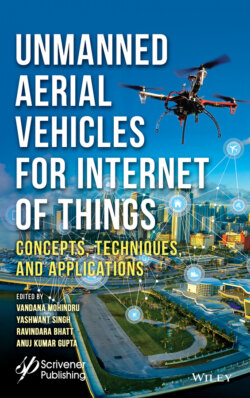Читать книгу Unmanned Aerial Vehicles for Internet of Things (IoT) - Группа авторов - Страница 41
1.3.5.5 Cellular Technology for UAS Operation
ОглавлениеCellular-tech. like emerging 5G technology & LTE are likely to be a candidate for UAS development. It ensures [25]:
Table 1.2 Frequency bands.
| Region 1 | Region 2 | Region 3 |
| 12.5–12.75 GHz for space to Earth | 10.95–11.2 GHz for space to Earth | 12.2–12.75 GHz for space to Earth |
| 14.0–14.47 GHz for Earth to space | 11.45–11.7 GHz for space to Earth | 14.0–14.47 GHz for Earth to space |
| 19.7–20.2 GHz for space to Earth | 11.7–12.2 GHz for space to Earth | 19.7–20.2 GHz for space to Earth |
| 29.5–30.0 GHz for Earth to space | 14.0–14.47 GHz for Earth to space | 29.5–30.0 GHz for Earth to space |
| 19.7–20.2 GHz for space to Earth | ||
| 29.5–30.0 GHz for Earth to space |
- High mobility
- Increased reliability & quality of services
- Ubiquitous coverage
- Robust security Radio Division.
Numerous telecom companies are conducting trials for UAS operation in cellular LTE network and consequently, the problems faced are [26]:
- Optimization of the cellular requirement for drones: Cellular networks are needed to be distinguished from the one which is currently in use by worldwide users for optimal operation (e.g. Noise avoidance) of UAs in cellular networks.
- Handover optimization: While in operation it is obvious UAs are going to receive signals from multiple base stations. Therefore, handover will be frequent which will lead to heavy signaling overheads.
- Interference mitigation: When airborne UA will receive signals from multiple base stations hence there will be interference.
